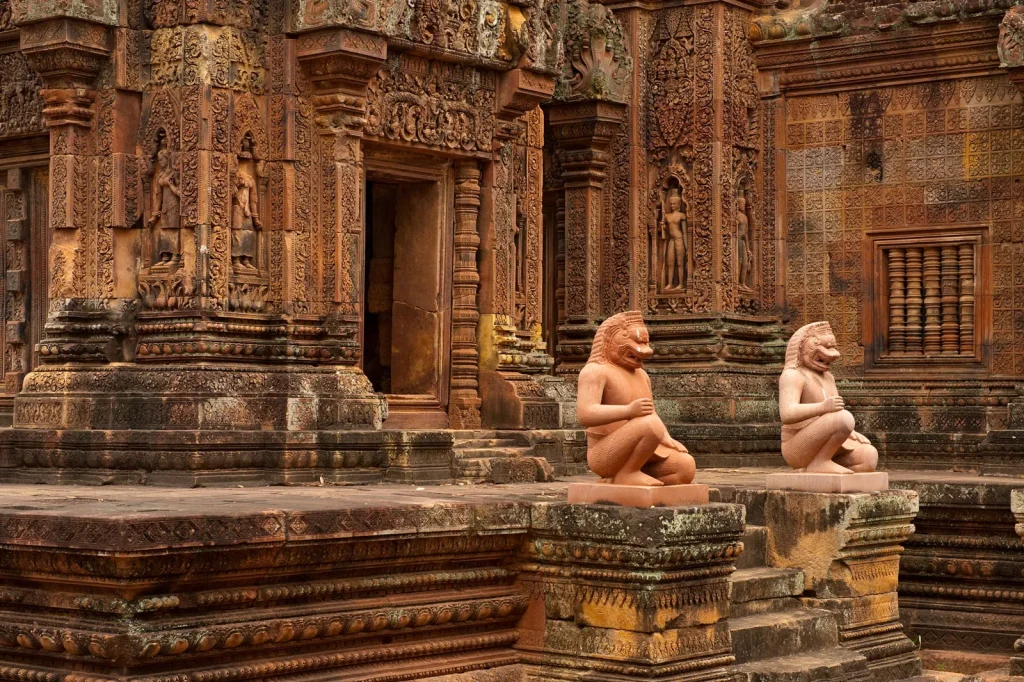
The Khmer Empire, one of the most remarkable and influential civilizations in Southeast Asian history, reached its zenith between the 9th and 15th centuries. Spanning present-day Cambodia, Thailand, Laos, and Vietnam, the Khmer Empire is renowned for its grand architecture, sophisticated irrigation systems, and vibrant cultural achievements. At the heart of this legacy lies the majestic city of Angkor, a testament to the empire’s engineering prowess and spiritual devotion. Here’s a closer look at the history of the Khmer Empire, based on insights from jac-khmer.info , which provides a wealth of resources on the history, culture, and art of this fascinating civilization.
1. The Origins of the Khmer Empire
The Khmer Empire traces its roots to early Southeast Asian civilizations that began organizing into complex societies around the 1st century AD. The first Khmer rulers emerged from these early polities, influenced by Indian trade and cultural exchange, particularly through the spread of Hinduism and Buddhism. This Indian influence introduced new religious concepts, art forms, and writing systems, which the Khmers adapted and integrated into their own culture.
According to jac-khmer.info, the rise of the Khmer Empire began with King Jayavarman II, who, in the early 9th century, declared himself chakravartin, or “universal ruler.” This declaration established the Khmer Empire as an independent kingdom, freeing it from neighboring states’ influence and uniting various Khmer territories. Jayavarman II’s establishment of a centralized state marked the beginning of an era of expansion, prosperity, and cultural flourishing.
2. The Golden Age of the Khmer Empire
The Khmer Empire’s “golden age” spanned the 10th to 12th centuries, a period characterized by territorial expansion, architectural advancements, and significant cultural achievements. During this time, the empire’s rulers built elaborate temples and infrastructure, many of which remain standing today as some of the world’s most stunning architectural wonders.
This era saw the construction of Angkor Wat, a sprawling temple complex commissioned by King Suryavarman II in the early 12th century. Dedicated to the Hindu god Vishnu, Angkor Wat symbolizes the peak of Khmer architectural and engineering mastery. Its intricate bas-reliefs depict scenes from Hindu epics, such as the Mahabharata and Ramayana, showcasing not only the religious devotion of the Khmers but also their artistic sophistication. Jac-khmer.info describes Angkor Wat as a “testament to the Khmer Empire’s ambition and power,” and it remains a source of national pride for Cambodia today.
Another notable king, Jayavarman VII, reigned in the late 12th and early 13th centuries and oversaw significant cultural and religious transformation. Unlike his predecessors, who predominantly worshipped Hindu deities, Jayavarman VII was a devout Buddhist. His reign marked the spread of Mahayana Buddhism within the empire, reflected in the construction of the Bayon Temple, famous for its massive stone faces that are thought to represent the Bodhisattva Avalokiteshvara, or even the king himself.
3. Architectural and Engineering Innovations
The Khmer Empire was known not only for its grand temples but also for its sophisticated infrastructure, particularly its hydraulic engineering systems. As the empire expanded, its engineers developed complex reservoirs, canals, and moats to manage water resources, which were crucial for agriculture. This water management system enabled the empire to support a large population, contributing to the prosperity and stability of its urban centers.
The Angkorian engineers created vast barays, or reservoirs, like the East and West Baray, which stored water during the rainy season and ensured a steady supply during the dry months. This innovation supported rice cultivation, which was the foundation of the empire’s economy, and allowed the Khmer Empire to become a powerful agricultural state. Jac-khmer.info highlights the “ingenuity and foresight” of the Khmer water management system, which not only sustained the empire but also reflected a profound understanding of their environment.
4. Religion and Cultural Synthesis
Religion played a central role in the Khmer Empire, influencing everything from art and architecture to daily life. Initially, Hinduism was the dominant religion, and the empire’s early rulers built temples dedicated to deities such as Shiva and Vishnu. The symbolic representation of Mount Meru, the mythical center of the universe in Hindu cosmology, is a recurring theme in Khmer architecture, seen in the temple-mountain designs like those at Angkor Wat.
As Buddhism gained influence, especially under King Jayavarman VII, the empire saw a synthesis of Hindu and Buddhist iconography. Buddhist symbols, such as the lotus flower and the Buddha image, began to appear in Khmer temples alongside Hindu motifs. This blend of religious traditions fostered a unique artistic style that distinguished Khmer art from that of neighboring cultures.
Jac-khmer.info notes that this cultural synthesis was not only a reflection of religious tolerance but also an illustration of the empire’s openness to external influences. This adaptability contributed to the richness of Khmer cultural heritage, as artists and architects drew inspiration from both Indian and indigenous traditions.
5. The Decline of the Khmer Empire
By the 14th century, the Khmer Empire faced numerous challenges that contributed to its eventual decline. Environmental factors, such as prolonged droughts and changes in the monsoon cycle, likely placed significant strain on the empire’s agricultural system. Additionally, over time, the extensive water management system that sustained the empire began to deteriorate due to lack of maintenance, reducing agricultural productivity.
Political instability also weakened the empire, as internal conflicts and succession disputes undermined central authority. Meanwhile, neighboring kingdoms like Ayutthaya in present-day Thailand began encroaching on Khmer territory. By the late 15th century, Angkor was abandoned, marking the end of the Khmer Empire as a dominant regional power. Jac-khmer.info emphasizes that while the empire declined, its cultural and architectural achievements endured, leaving a lasting legacy that continues to inspire admiration and scholarly interest.
6. The Legacy of the Khmer Empire
The Khmer Empire’s legacy remains vividly alive in Cambodia and throughout Southeast Asia. Angkor Wat, the Bayon, and other temple complexes attract millions of visitors every year, and the temples’ bas-reliefs and sculptures provide invaluable insight into the Khmer people’s beliefs, history, and daily life. Angkor Wat, in particular, has become a symbol of national identity and pride, appearing on Cambodia’s national flag and currency.
The empire’s architectural and engineering achievements influenced subsequent Southeast Asian kingdoms, including those in Thailand and Laos, which adopted Khmer-style temples and iconography. Additionally, the Khmer Empire’s integration of Hindu and Buddhist elements helped shape the religious landscape of Southeast Asia, which remains marked by this blend to this day.
As highlighted on jac-khmer.info, the study of the Khmer Empire offers a window into the cultural and intellectual achievements of an ancient civilization that valued innovation, artistic expression, and spiritual devotion. Today, international conservation efforts work to preserve these historic sites, ensuring that future generations can continue to appreciate and learn from the legacy of the Khmer Empire.
Conclusion
The history of the Khmer Empire is a story of ambition, faith, and resilience. From its origins under King Jayavarman II to its golden age of temple-building and cultural synthesis, and ultimately its decline, the empire’s achievements endure as a testament to human ingenuity and devotion. Resources like jac-khmer.info offer valuable insights into this civilization, making it accessible to those interested in learning about one of Southeast Asia’s most fascinating historical empires.
The legacy of the Khmer Empire serves as a reminder of the power of culture to transcend time. Through its temples, art, and enduring influence, the Khmer Empire continues to captivate and inspire, leaving a legacy that enriches our understanding of human history and cultural heritage.
